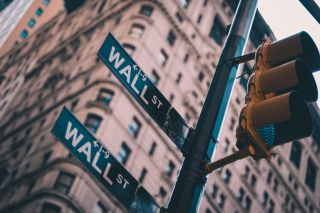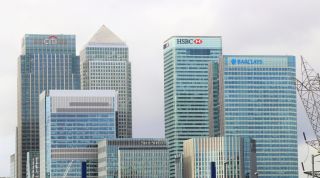Groupthink
The 2008 Global Financial Crisis: 15 Years Later
Could it happen again?
Posted September 22, 2023 Reviewed by Gary Drevitch
Key points
- The 2008 financial crisis cost the global economy $2 trillion.
- Numerous experts issued prescient and timely warnings, but were generally ignored.
- Our powerful evolutionary desire to herd makes us vulnerable to repeating the same mistakes.
- Similarities between 2008 and 2023 include escalating loan defaults and speculative trading instruments.

At a London School of Economics event in 2008, the Queen of England famously asked of the global financial crisis, “Why did no one notice it?”
The answer is clear: They did.
Alan Greenspan, former Chairman of the U.S. Federal Reserve, once said that no one could have predicted the housing bubble of 2008. Yet Scion Capital CEO Michael Burry not only predicted the subprime crash, but provided the exact month that the first wave of subprime defaults would hit. Yet Wall Street continued to aggressively acquire subprime debt.
Similarly, at a G7 event in Washington in 2007, fund managers Jim Chanos and Paul Singer received little more than “polite applause and stifled yawns” when they tried to warn attendant dignitaries of the impending market meltdown. Ultimately, numerous hedge funds, including The Baupost Group, Elm Ridge, Elliott Associates, Cedar Hill Capital Partners, Cornwall Capital, Harbinger, and Hayman Capital, all voiced similar fears.
Warnings weren’t limited to exclusive G7 or select corporate gatherings, either. By July 2007, a 36-page Bloomberg Businessweek edition titled "Toxic Debt" hit newsstands in multiple nations, including prescient, insightful articles such as ‘The Subprime Sinkhole,' ‘The Poison in your Pension,’ and ‘The Ratings Charade.'
Time eventually ran out on July 17,2007, when both flagship Bear Stearns funds—the High-Grade Structured Credit Fund and the High Grade Structured Enhanced Leveraged Fund—folded. A rapidly engineered $3.2 billion rescue of both funds by Bear Stearns proved unsuccessful. Days later, the funds went bankrupt, sparking what would become an unstoppable fear of contagion. Lehman Brothers would declare the largest bankruptcy in American history on September 15, 2008, and the subprime crisis would ultimately cost the global economy $2 trillion.

Groupthink
So why were so many expert warnings ignored?
Groupthink seemed partly to blame: William Black, Associate Professor of Law and Economics at the University of Missouri-Kansas City believed that U.S. Treasury Secretary Hank Paulson Jr. “brought on people who have the same life experiences and ideologies as he does…their mindset is not just shaped into generalized groupthink–it’s specific Paulson groupthink.” By Black’s reckoning, Paulson was simply unwilling to consider outside points of view, however meritorious or well-versed they might have been.
Animal Spirits
Another reason? Animal spirits.
According to Charles Darwin, homo sapiens dominant need to avoid pain and seek out pleasure might have become the “main driver of our subsequent cultural evolution.” In the context of the financial markets, economist John Maynard Keynes referred to such hedonic drivers as animal spirits: a spontaneous urge to action, based on instincts, emotions, and urges. Keynes argued that these urges could lead to negative outcomes like fear, or hysteria, fuelling herding instincts, bubbles, and crashes.
Brain scans now paint a clear picture: Money wages a powerfully seductive effect on the brain, meaning that we simply cannot reliably make rational decisions around it. Herding, a behaviour that powerfully drove the events of 2008, also appears to be an unavoidable human act. In the words of neuroscientist Paul Zak, for example, “our brains have evolved to make us desperately want to follow the crowd." Zak views desperate buying and panic selling in the financial markets as inevitable consequences of our herd mentality.
Trading can even become addictive and has often been likened to gambling, with former CFO of Lehman Brothers Erin Callan likening her tenure at the bank as a “drug addiction–extremist behavior."
Back to the Future
Fast forwarding to 2023, has anything actually changed? Well, yes and no. In many ways, the financial landscapes of 2008 and 2023 are remarkably different, but there are similarities.
First, the emergence of an option called an 0DTE is currently stoking fears of a potential volatility shock. 0TDE’s currently account for up to 50% of the S&P 500’s total options trading volume. 0TDE’s, simply explained, are options that expire the same day they are traded. 0TDE’s now carry a notional trading value of $1 trillion, according to JPMorgan. However, 0TDE's have been referred to as ‘casino-esque,' ‘pure degenerate gambling,' potentially ‘incredibly dangerous,’ and a vehicle that ‘some Wall Street pros don’t understand’ by Bloomberg.
In many ways, 0DTE’s seem to be powerfully indulging wildly speculative and herding-focused behaviours that synthetic CDO’s also drove in 2008 in the context of the subprime housing boom.
Second, if we directly compare 2008 and 2023 loan delinquencies, we can track notable similarities. Right now, Americans are defaulting on credit card loan payments faster than anytime over the last decade with a 40% surge in the use of buy now, pay later services (often for necessities, like groceries or gas). Concerningly, auto-loan delinquency rates now stand at their highest levels since 2008.
Almost $162 billion in securitized commercial real estate debt is set to mature this year, ringing some serious alarm bells (not least because that figure is set to rise to $1.5 trillion by 2025). Given these figures it is reasonable to assume that there will be a considerable number of future defaults, and that many property owners may simply choose to walk away from their properties as a result. (Walkaways were a major factor in the subprime crisis of 2008.)
But this time it’s different…right?
The financial landscapes of 2008 and 2023 are different in myriad complex ways. However, one overriding factor remains the same: Given our evolutionary design, homo sapiens cannot avoid being driven as fundamentally by animal spirits today as we were in 2008. Neurological studies show us that we can never truly be rational around money: in fact, its effects can be so potent as to be similarly powerful to cocaine. Perhaps that’s why, as long ago as 1898, economist Thorstein Veblen asked why economics was not an evolutionary science.
Ultimately, if we are honest with ourselves, we know that we will always be hardwired to herd. And as long as those impulses are allowed to reign free, we seem doomed to repeat the same boom-and-bust cycles in perpetuity. Rational warnings of a crash feel like a doctor telling us to eat the salad, not the donut. We listen, but we simply feel too tempted to stop.
That, one might argue, is why warnings were ultimately ignored in 2008—and why they could be ignored in 2023, too.




